Traffic has always been bad in Grand Canal in front of the Santa Lucia railroad station.
It is one of the main point of entry for the many millions of tourists, who come to Venice every year, and for the many commuters, who often live on the mainland but work in Venice.
All in all, it makes for a busy and crowded place, both on land and on water.
Water buses, taxis, transport boats and gondolas all vie for the same limited space.
It is an area which has undergone dramatic changes in the last few centuries.
To make room for the railroad station, several churches, monasteries and charities were demolished. Among these was the church of Santa Lucia, which is why the station carries her name. St Lucy herself now resides in the nearby San Geremia church.
On the opposite side of the canal, the church of Santa Croce — the Holy Cross — was also removed. The importance of the church is evident — it gave the name to the entire Sestiere of Santa Croce.
The associated monastery of Santa Croce, which once stood on the extreme western end of Venice, is now a police station, while the nearby church of San Andrea della Zirada is reduced to a warehouse for the ACTV — the Venetian public transport company.
Giovanni Bembo, doge from 1615 to 1618, was buried in San Andrea della Zirada. He now rests under piles of scaffolding and high water passages — sic transit gloria mundi.
Why this discussion?
It is all because I stumbled over an engraving from the early 1700s of that area.

We don’t know who made it, but it was commissioned by the printer Domenico Lovisa, and published in his Il Gran Teatro di Venezia sometimes after 1715.
In the background, to the right, is the rear part of the church of Santa Croce (marked with an A), while the dome of the nearby Tolentini is visible (B).
To the left, there are several residential buildings, some of which are still there today, while others appear to have changed.
This is the current view of the same area, from Google Street View.
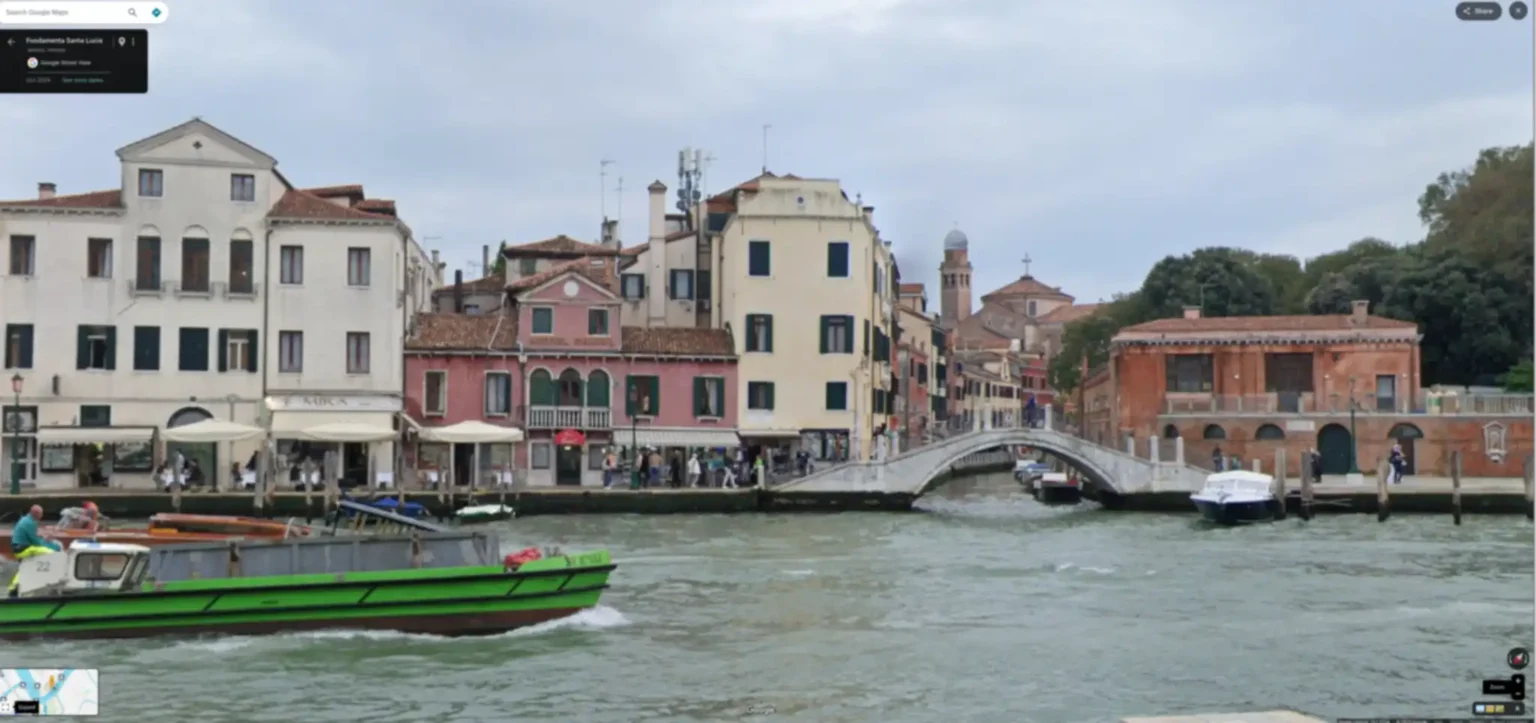
The main difference is that the church has gone.
Just like today, three hundred years ago, there was a good deal of traffic on the Canalazzo.
In the engraving, there are at least ten gondolas, four workboats, and another boat for transporting persons.
Three of the workboats, in the middle of the engraving, have had a traffic accident, and two of the rowers clearly have an argument about who’s to blame. An argument they discuss employing their oars.
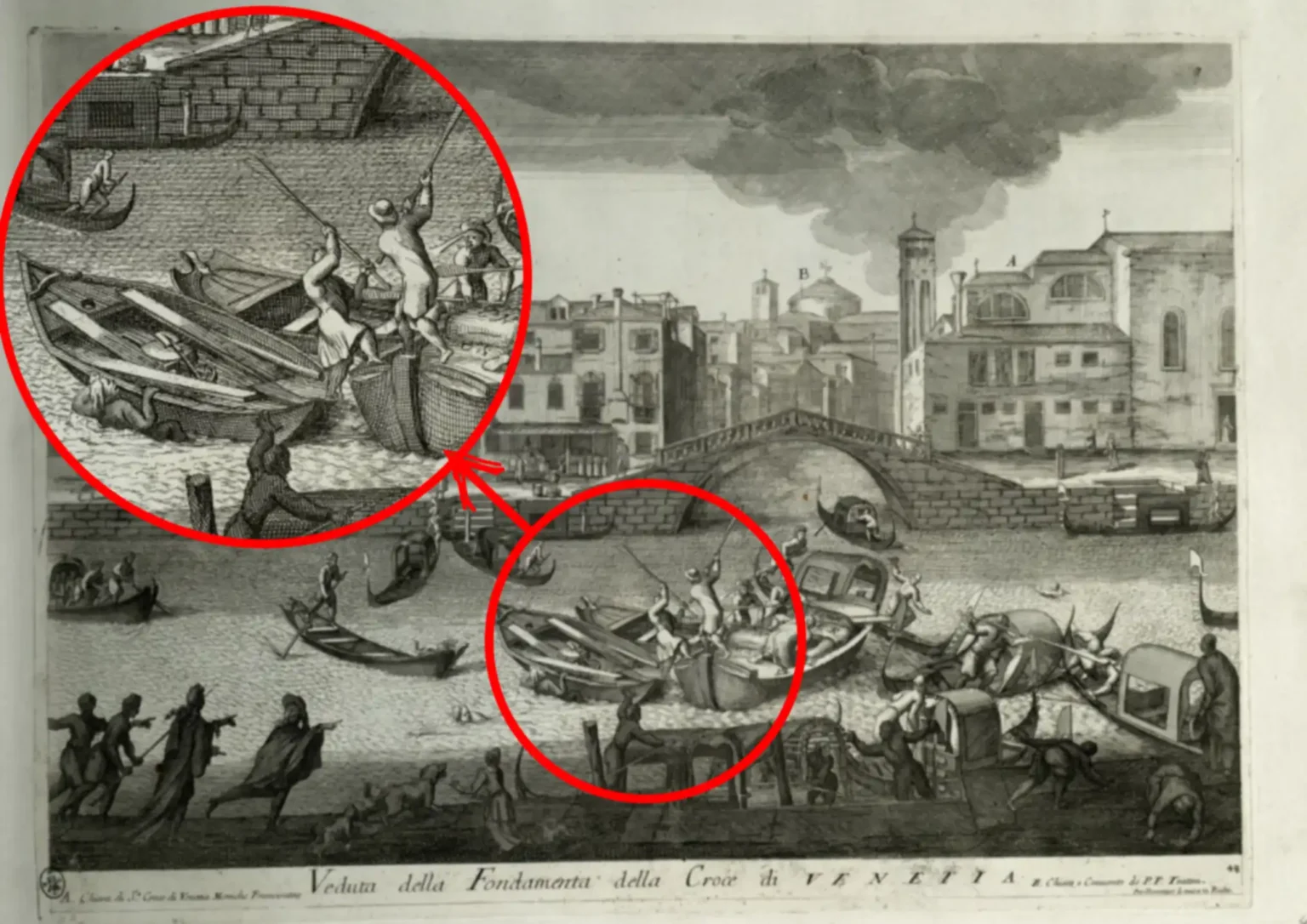
Two men, from one of the boats, have fallen in the water. One is trying to climb back into the boat, while another is swimming away, locking backwards towards the two others having a duel of oars.
The fourth workboat, with a single person rowing, seems to be coming to their aid. There’s an excited dog at the bow, barking.

To the right, there’s another accident unfolding. One gondola seems to have rammed another, and one of the rowers of the latter is taking out his anger on a rower of the offending boat, again with the oar as a weapon.
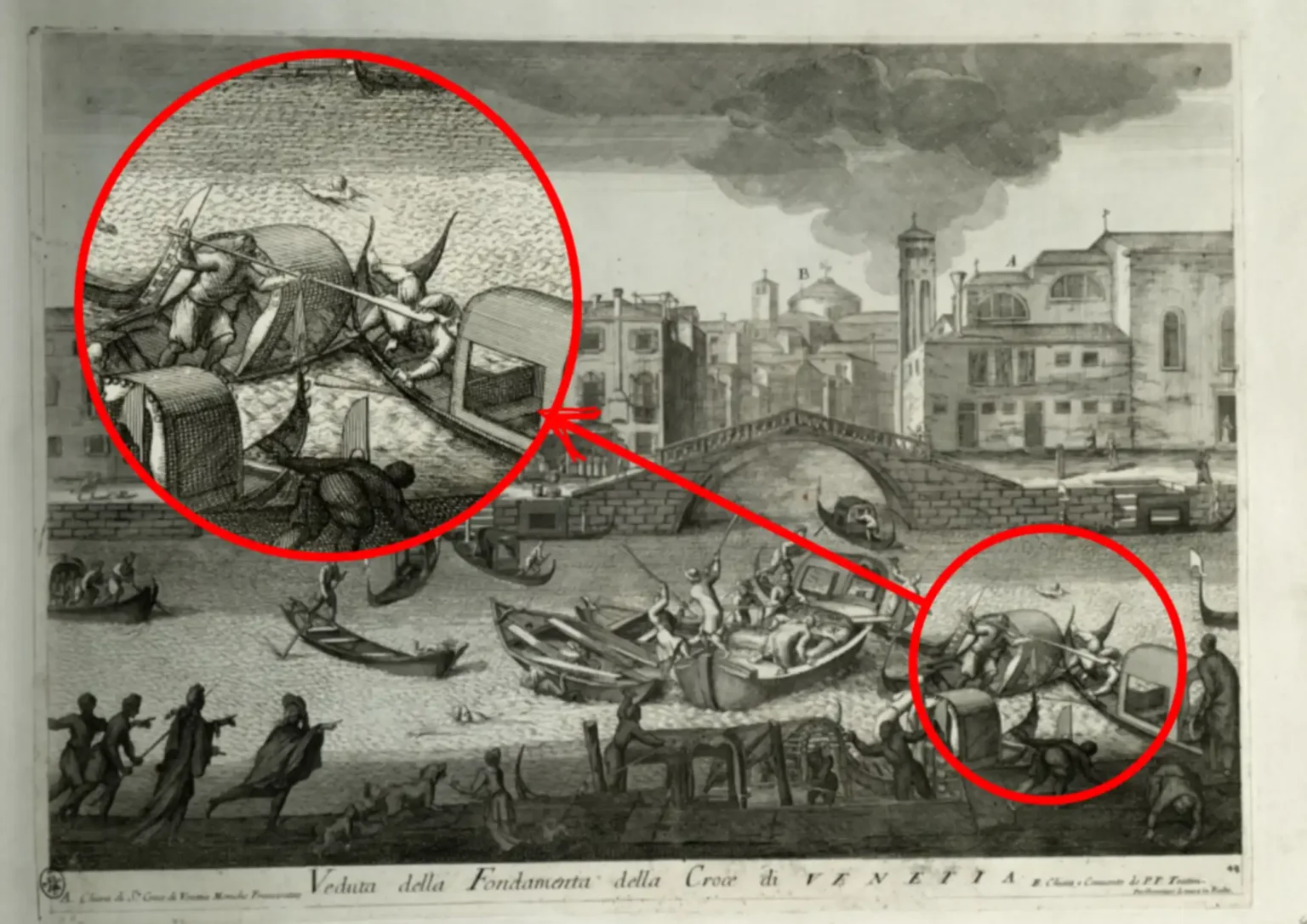
A third gondola appears to be in trouble, caught in-between the two accidents. It is listing badly, and the front rower has lost balance and is about to fall in the water. There’s already somebody else in the water, swimming towards the far shore.
On the near shore, in shade in the foreground, several persons are looking at the mess. To the far right, a man looks on aghast, while a woman in the middle seems scared. There are several dogs running and barking.
Some finely dressed people come running from the left.
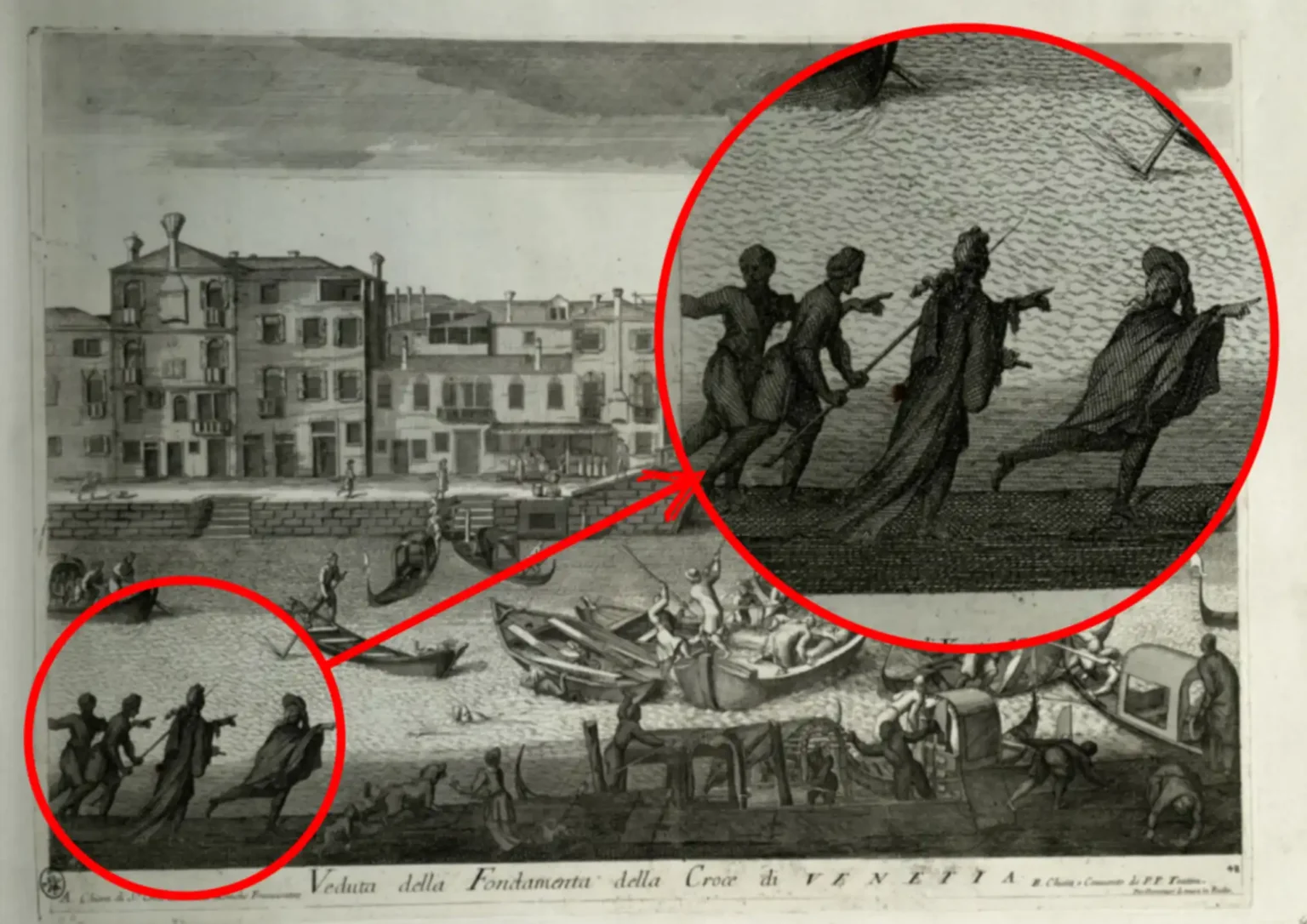
Based on their direction, and they way they’re pointing, their main concern is the incident between the gondolas. They don’t seem to care too much about the other accident or the workers in the water.
The other day, in our local news, a taxi had hit a gondola near the Rialto Bridge.
Nothing ever changes!

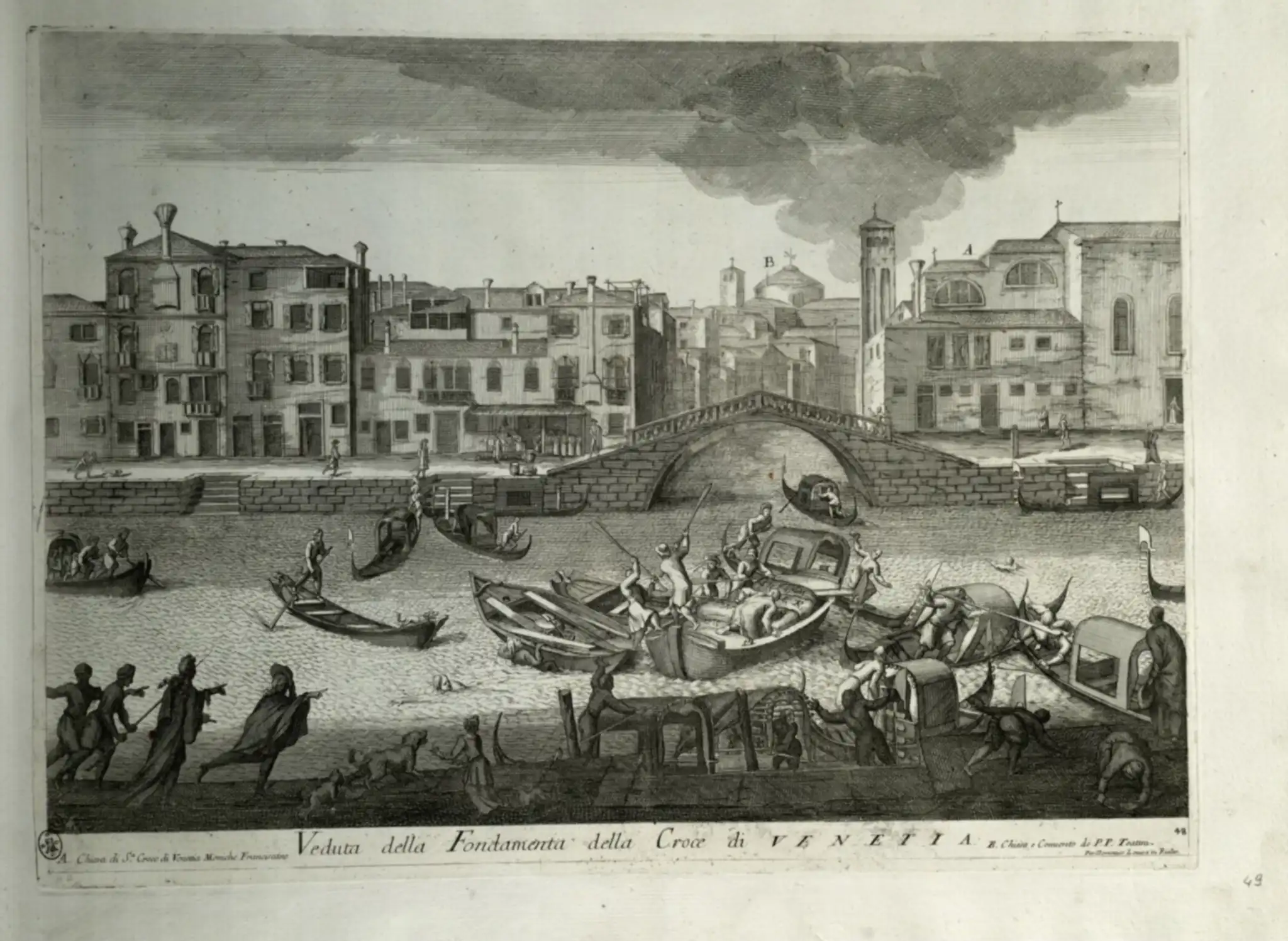
Leave a Reply